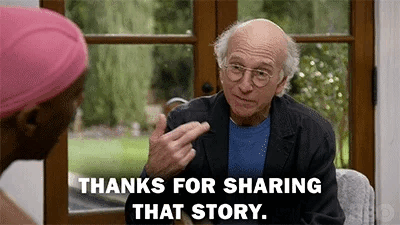|
|
Let’s face it: you’d rather be knee-deep in your latest project than figuring out how to tweet or blog about it.
Trust us, we get it. You’re juggling deadlines, squashing bugs, and trying to make your creation the next big thing. Who has time for social media, right? Or maybe you feel out of your depth when it comes to marketing, or just plain hate the idea of self-promotion.
But here’s the thing: these platforms can be your cheat sheet for getting your hard work noticed.
This article will guide you to social media success without sacrificing your sanity. We’ll cover everything from picking the right platforms to creating content that won’t make you cringe, so you can build a presence without giving up your coding time.
Let’s turn social media from a headache into a tool that works for you.

Why Is Social Media Important for Software Business Growth?
Hear us out. Social media is more than just a digital playground and a feed full of selfies; it’s a powerful tool for growing your software product business. Here’s what you can achieve by improving your visibility on socials.
Build Brand Awareness
Your code speaks for itself, but your brand is the voice that introduces it. Social media is your stage to share your expertise, values, and personality with potential customers. Consistent sharing of valuable content can position you as a thought leader in your field.
Arvid Kahl of The Bootstrapped Founder uses X to openly and transparently share his product development journeys. This honest “warts and all” approach has rightfully positioned him as a leading proponent of the “build in public” movement while also establishing him as an authority in the software community.
“A strong personal brand helps build trust and authority, making it easier to sell products because people are more likely to buy from someone they recognize as an expert,” Marijana Gligoric, CEO at brigit.dev agrees. “It also opens doors to partnerships and speaking opportunities.”
But if the words “personal brand” turn you off, know that it’s not a requirement to successfully promote your business on social media.
“I don’t think it’s a must,” says Meg Scarborough, founder and CEO of Megawatt.
“Building a ‘personal brand’ is a really nebulous concept. But you do want to make sure you have a good understanding of your audience — their likes and dislikes, where they hang out online, what their problems or challenges at work look like, and how you can be helpful. Then, just be yourself, always with the underlying motive of being helpful and of service to others. That’s the easiest way to be authentic,” recommends Meg.
Generate Leads
If used strategically, social media can be a lead generation goldmine. Whether you’re selling WordPress themes, offering custom development services, or promoting a SaaS product, platforms like LinkedIn and X can be effective lead magnets.
Foster Community
Building a community around your product or service can be incredibly rewarding. Social media platforms provide a space to connect with your audience, answer questions, and gather feedback.
Improve SEO
While social media doesn’t directly impact your search engine rankings, it can indirectly boost your SEO efforts. Sharing high-quality content on social media can increase website traffic, which can improve your domain authority. Social media shares can also help your content get discovered by a wider audience, potentially leading to more backlinks.
Read more: How to Promote Your WordPress Plugin with Content Marketing & Outreach
Choosing the Platform: Where Does Your Audience Hang Out?
So, we’ve convinced you that social media is important. But with countless platforms out there, where should you focus your energy?
Before making the decision, think about who you’re trying to reach. Are you targeting other developers, potential clients, or end-users of your product? Here are a few tips to help you choose.
- If you’re looking to connect with fellow developers, X is your go-to platform. It’s where tech discussions happen in real-time. Platforms like Stack Overflow and GitHub also offer opportunities to engage with your target audience
- For B2B interactions, LinkedIn is non-negotiable. This platform is ideal for sharing your expertise, building relationships, and generating leads
- If your product is aimed at a broader audience, platforms like Instagram and Facebook might be more suitable. Consider where your target users spend their time online
Once you’ve identified your target audience, you can select the platform that best aligns with their behavior. For example:
- A developer building a WordPress plugin for small businesses might focus on X and LinkedIn to reach both developers and potential clients
- A developer creating a mobile app for teenagers would likely find success on Instagram and TikTok
- A developer targeting enterprises might prioritize LinkedIn and industry-specific forums
Remember: Your audience might be on multiple platforms, but it’s often more effective to concentrate your efforts on one or two where you can build a strong presence. Spreading yourself too thin isn’t time efficient and can lead to burnout and unsatisfactory results.
Now, let’s explore the most relevant platforms for product makers.

X: The Developer’s Hangout
X is like the watercooler for developers. It’s where the latest trends, tools, and debates happen in real-time. You’ll find everyone from indie developers to tech giants sharing code snippets, asking questions, and discussing industry news.
- Why X works for developers: X’s short-form format is perfect for sharing quick tips, code snippets, and engaging in rapid-fire conversations.
- Example: Developers can follow accounts like @ThePracticalDev and join discussions using relevant hashtags like #webdev, #javascript, #python, #wordpress, or #saas.
How to leverage X:
- Share daily coding tips or snippets related to your product
- Participate in X chats like #WPchat for WordPress developers
- Live-tweet from tech conferences or WordPress events
Take a look at how Jeffrey Way, the founder of Laracasts, approaches using X. He shares Laravel tips, announces new tutorials, and engages with the developer community.
Or Ahmad Awais, a WordPress core contributor and developer advocate, who regularly shares development tips, tools, and personal insights. His X feed is a mix of technical content and personal experiences, which helps him connect with a broader audience, from beginners to seasoned developers.
Read more: Shaping the Space & Driving Change: 56 WordPress Experts to Follow Online
LinkedIn: Your Professional Network
LinkedIn is less about quick-fire updates and more about building professional relationships. It’s where you can position yourself as an industry expert and connect with potential clients or end-users.
- Why LinkedIn works for developers: LinkedIn is ideal for sharing in-depth articles, thought leadership pieces, and showcasing your product.
- Example: Developers can share blog posts about their latest projects, join industry groups, and engage with other professionals in their field.
How to leverage LinkedIn:
- Share case studies of how your plugin or SaaS product solved a problem your target audience is facing
- Write articles about development best practices or industry insights
- Join and participate in relevant groups like Freelancer WordPress Developer
“It all depends on where your target audience for the product is, but LinkedIn is ideal if your niche is professionals, agencies, or businesses because it’s a hub for networking and business-related content,” says Srdjan Ristanovic, CTO at brigit.dev. “For most developers, starting with LinkedIn makes sense because it combines professional credibility with networking opportunities.”
YouTube: Tutorials and Product Demos
YouTube is a powerful platform for developers who want to create video content. Video content is highly engaging and can reach a global audience, making YouTube an excellent choice for developers looking to educate or showcase their expertise.
- Why it works for developers: It’s ideal for step-by-step tutorials on using your plugin, theme, or SaaS product, as well as for product demos and feature explanations.
- Example: A WordPress plugin developer for a custom form builder could create a series of YouTube tutorials demonstrating how to create advanced, multi-step forms with conditional logic.
How to leverage YouTube:
- Create “how-to” videos for common issues your product solves
- Host live coding sessions or Q&As
- Produce short, engaging videos explaining complex development concepts
Brad Traversy is a well-known figure in the web development community, thanks to his high-quality tutorials on YouTube. His channel Traversy Media covers everything from HTML basics to full-stack development, and his clear, approachable style has earned him a large following and substantial influence.
Vue Mastery uses YouTube to share comprehensive tutorials and courses on Vue.js, a popular JavaScript framework. Their content is educational and well-produced, making it a go-to resource for developers looking to learn Vue.js.
Facebook: Reaching a Broader Audience
Facebook may not be the first place that comes to mind for developers, but it’s still one of the most versatile social media platforms thanks to its vast user base. If your product is aimed at a broader audience, including small businesses or end-users, Facebook offers unique opportunities to interact with them.

- Why it works for developers: Facebook offers a broader reach compared to Instagram, allowing you to connect with a wider audience. It’s also a great platform for sharing longer-form content, such as blog posts or tutorials.
- Example: A developer building a SaaS product could share helpful tips on Facebook or use Facebook Groups to build a community around their product.
How to leverage Facebook:
- Share engaging posts about new features or updates to your product
- Use Facebook Live to demo your product in real-time and answer user questions
- Create a Facebook group for your users to build community and provide support
Elementor, a popular WordPress page builder, has built a thriving Facebook community of over 150k members. The group acts as a hub for users to connect and learn from each other, which contributes to the overall success of Elementor’s product by building a loyal customer base.
GitHub: Code-Sharing and Open-Source Community
While not a traditional social media platform, GitHub is the central hub for developers to showcase their work, collaborate on projects, and engage with the open-source community. An active and well-maintained GitHub profile is as important as any social media presence — it’s where your code speaks for itself.
- Why it works for developers: GitHub lets you showcase your code and contribute to open-source projects, which helps you build credibility within the developer community.
- Example: A WordPress plugin developer could open-source a lightweight version of their premium plugin on GitHub, attracting potential customers to the full-featured paid version.
How to leverage GitHub:
- Maintain public repositories for your open-source plugins
- Contribute to popular WordPress or SaaS-related projects
- Use GitHub Pages to create a portfolio or documentation for your products
A prolific open-source contributor, Sindre Sorhus’ GitHub profile is a testament to his influence in the developer community. With hundreds of repositories and millions of downloads, his work on GitHub has significantly boosted his visibility and credibility.
Meg also recommends being active in GitHub communities, as well as other similar places where developers like to hang out and exchange advice.
“The communities I’d recommend looking into are: Reddit, StackOverflow, GitHub, and other developer-focused social media/tech platforms,” Meg says. “You may also find some good private Slack, Discord, or even LinkedIn groups where you can talk about what you’re building.”
Instagram: Visual Appeal for Developers
You might think Instagram is just for influencers and photographers, but don’t underestimate its power for developers. Especially if you create visually appealing products like WordPress themes or UI/UX design tools.
- Why it works for developers: Instagram is a great platform to showcase your product’s aesthetics, share behind-the-scenes glimpses, and connect with a younger audience.
- Example: A developer who creates WordPress themes could share visually stunning website mockups, before-and-after transformations, and user testimonials.
How to leverage Instagram:
- Share beautiful screenshots of your WordPress themes or visually appealing mock-ups of your plugin or SaaS in action
- Post pictures from hackathons or team coding sessions
- Use Stories to give quick tips or do polls about feature requests
For example, Spotlight, a plugin that lets you add your Instagram feed to your WP website, has a colorful, visually stunning feed on its own Instagram page, where the team shares tips, product updates, and new blog posts.

Time-Saving Tactics to Build a Great Social Media Presence
Software makers are notoriously busy, so let’s focus on “lazy” tactics that can help you gain visibility on social media, but with minimal time investment.
Plan and Schedule Content Creation Ahead
A content calendar is your roadmap to social media success. It helps you plan, organize, and schedule your posts in advance, so that you can consistently appear in front of your target audience.
For example, you could:
- Create a content calendar in advance, with a mix of technical tips, product updates, industry news, and behind-the-scenes glimpses
- Schedule content topics around your development roadmap, like announcing beta releases or new feature launches
- Batch content creation — create multiple pieces of content in one sitting, to save time and energy in the long run
- During batching sessions, prioritize creating evergreen content you can schedule over time without losing relevance (like a beginner’s guide to a topic within your niche or explanations of basic concepts)
- Develop reusable templates for recurring content types, like “Tip of the Week” or “User Spotlight”
- Turn a single blog post into multiple social media posts, infographics, or short video clips
- Schedule posts in advance so you can maintain a regular posting schedule without having to manually post every day (for example, you can do this on LinkedIn and X without additional tools)
Top tip: Plan content themes by assigning specific topics to different days, such as “Code Snippet Sundays” or “Feature Spotlight Fridays”.
Recommended read: Check out Matteo Duò’s framework for building minimum viable content assets for your product — it’s an excellent way to save time, and a great starting point if you haven’t created any content for your software business before.
Use Storytelling to Connect with Your Audience
While storytelling might seem like a creative pursuit, it’s a powerful tool for developers. Sharing personal anecdotes, customer success stories, or the challenges you’ve overcome can create a deeper connection with your audience.
It also helps build trust, increase engagement, and make your brand more memorable.
- Share the story of how you overcame a coding challenge to create a new product feature
- Narrate how your tool or plugin solved a real problem for a customer
- Show your workspace or team meetings to humanize your brand
- Encourage your customers to share their stories about how they use your product
- If you have a small team, introduce your team members, share their roles, and what they love about working on the product
- Be honest and transparent in your storytelling, as authenticity contributes to building a loyal community
Top tip: Don’t just focus on successes — sharing stories of failure and what you learned from them can be incredibly powerful. It shows your audience that you’re human, and it provides valuable insights they can learn from.
Read more: Building in Public: Unveiling the Power of Transparent Creation for Software Founders

Engage with Your Audience
Building a community involves active participation. Engagement is key to building a strong social media presence, and responding to comments and messages is a critical part of this process. It also shows that you care about your audience and are willing to invest in excellent customer service.
For developers, this is also an opportunity to address user concerns and gather feedback!
- Allocate 15 to 30 minutes twice a day to respond to social media interactions
- Focus on responding to questions about your product or development process over general comments
- Always aim to provide value in your responses, whether it’s answering a question, resolving an issue, or simply saying “thank you” to a positive review
- Make sure you engage with other people’s content and participate in interesting discussions, too
Top tip: “Block off 30 minutes of your day every day to interact with content, post anything you find interesting (related to your product or not), and look for people talking about problems your product could solve. Make it a habit, and it won’t feel so daunting,” advises Megawatt’s CEO, Meg.
Grab a free copy of our Cheat Sheet for
Selling Plugins and Themes
A growth roadmap with concise, actionable tips for every milestone of WordPress product development.

Build Relationships with Influencers
Partnering with influencers can amplify your reach and lend credibility to your brand, especially when targeting a niche audience.
As Rand Fishkin said in a plugin.fm podcast episode, instead of building an audience from scratch, use digital PR: you’ll be leveraging the credibility of relevant online publications to reach your ideal customers directly because influencers and journalists “already own the audience whose attention you’re trying to earn”.
Partnering with popular tech bloggers, for example, to review your new product can generate a lot of buzz.
- Look for respected voices in your niche, like well-known developers or tech reviewers
- Comment on their posts and share their content before asking for anything in return
- Provide them early access to new features or exclusive content they can share with their audience (in other words, try guest posting!)
“Guest posts are a must if you want to build an effective social media strategy for your product. Collaborating with influencers or other developers in the WordPress community to co-create content. This way you can reach more people and gain credibility as a respected source,” confirms Marijana from brigit.dev.
Track Key Metrics to Understand Your Performance
Tracking key metrics allows you to measure the effectiveness of your social media efforts and adjust your strategy based on data-driven insights. You’ll be able to find what’s working, optimize your strategy, and measure if it pays off to keep investing your time in a specific platform or type of content.
Track metrics like:
- Impressions
- Engagement rate
- Click-through rate
- Follower growth
- Number of leads
Top tip: You can track these metrics within the platform you’re using (for example, your LinkedIn page analytics), but you can also try all-in-one social media tools like Buffer (starts at $15 per month for three platforms) or Zoho Social (for up to 10 channels).
Fast-track Your Social Media Success
As a developer, your code may be your masterpiece, but social media is the gallery where you can showcase it to the world. Use platforms like X, LinkedIn, and GitHub strategically, and you can build your brand, connect with your audience, and ultimately drive the success of your software.
Social media success doesn’t happen overnight, but with the strategies and tips we’ve shared, you’re well-equipped to make your mark in the digital world. So go ahead, share that code snippet, post that product update, or start that engaging conversation. Your audience is waiting to hear from you!
Want more insights on growing your WordPress plugin or SaaS business? Follow Freemius on X and LinkedIn for regular tips, industry updates, and success stories from fellow developers.








